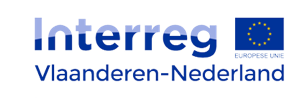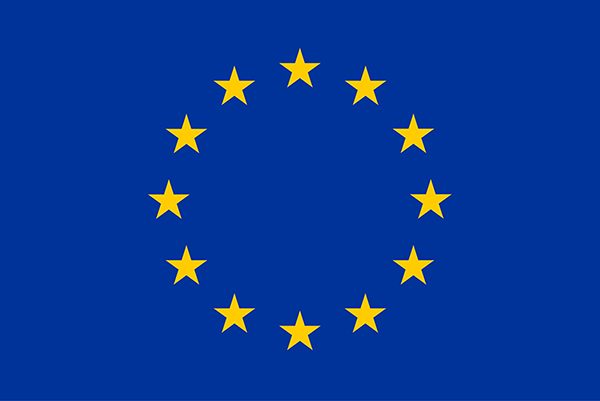ARTHE
Movement assistance in a smart brace
From until
What
ARTHE stands for “Active smart wearable orthosis for enhanced Rehabilitation THErapy”. Within the project, a brace was designed that is controlled by technology and activates the arm in this way.
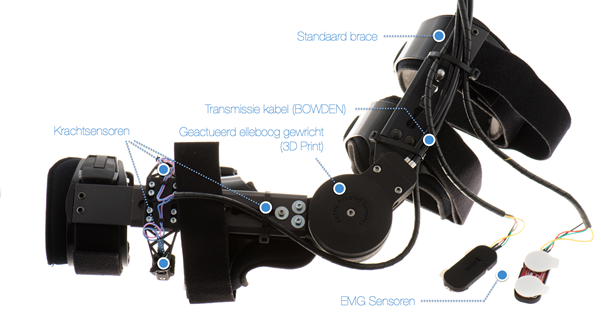
Goal
The primary goal of this project, in collaboration with Ortho-Medico, was the development of a therapeutic exoskeleton for the upper limb. This means that the brace itself allows the arm to perform therapeutic exercises or assists people with weaker or abnormal muscle control when they move their arm.
Relevance
Disturbed muscle control often occurs after a stroke or CVA. CVA stands for cerebrovascular disorders. This is a collective term for a brain hemorrhage, a brain infarct, a brain thrombosis… In such a stroke, the blood flow to the brain is disrupted.
In Belgium alone, an average of 52 people per day fall victim to a stroke. That number continues to rise. The older you get, the greater the chance of a stroke. For example, people over 80 have half more chance than 60- to 79-year-olds. Moreover, the group of over-80s will have doubled by 2050 compared to this year.
The group of elderly people will therefore grow, the group where strokes are most common. This means that the cost of care will also grow. Moreover, the group of caregivers will decrease proportionally in the future and alternatives are needed to cope with that shortage of care.
ARTHE is such an alternative. We focus on innovative care technology that can assist the caregiver to keep the current care model high-quality and affordable.
Van Peppen and colleagues published in 2004 that the therapy package for successful motor recovery after a stroke should first be repetitive, task-specific and functional. The patient must also be actively involved during the execution of the tasks. In that context, robotic aids or exoskeletons are particularly well suited.
Our role
Mobilab & Care developed a complete prototype of an exoskeleton for the upper limb from this philosophy. The brace senses the patient’s intention (with force or EMG sensors) and converts it into movement assistance for the elbow joint. This is done with the help of an electric motor.
Mobilab & Care was also responsible for the organization and execution of the phased user tests with this prototype. Both ten healthy subjects from Belgium and nine stroke patients from Belgium and the Netherlands tested the exoskeleton. The user experience and possible improvement points for the device were surveyed using a validated questionnaire.
Moreover, Mobilab & Care looked for capable partners for the industrialization and medical approval and ensured a smooth technology transfer. Feedback was requested from all healthy subjects, patients, therapists. That feedback was used to address the improvement points in the industrialization process.
A functional prototype was built consisting of an active elbow brace, a passive hand model, a shoulder stabilization, a motor package and a user interface. That device senses the patient’s movement intentions and guides the movement within the set limits and speeds.
The user’s intentions are detected based on force sensors (integrated) in the brace or based on muscle signals (EMG). In our tests, the force signal proved to be much more reliable than the EMG sensors. Moreover, the preparation time is shorter and the calibration procedure is simpler.
The brace was successfully tested by ten healthy subjects, two therapists and nine stroke patients. In Belgium, five patients were tested at the Revalution Center in Herentals and two at the MS Center in Overpelt. In the Netherlands, two patients tested the brace at Groenhuysen in Roosendaal.
The prototype was tested during co-creation sessions against both the needs of the field and those of the patient. To keep the weight of the device on the arm as light as possible, the motor was built into a compact module. That can be worn somewhere else on the body or in a backpack. The mechanical coupling with the elbow is made by Bowden cables.
The functionality of the partially paralyzed arm of stroke patients is very diverse. Therefore, seven different programs have been developed that can assist the arm to varying degrees in both flexion (bending) and extension (stretching).
The sensitivity of each sensor can be fully adjusted to the patient’s needs via the handy user interface.
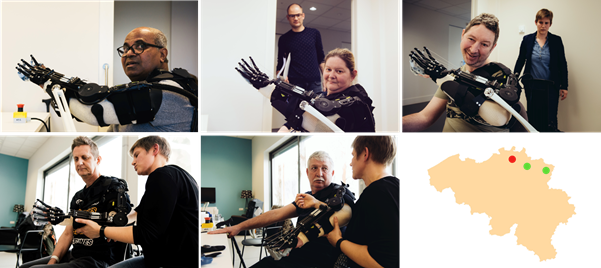
Future
Due to the good reception of this prototype, by both caregivers and patients, this prototype is currently being further developed for market introduction.
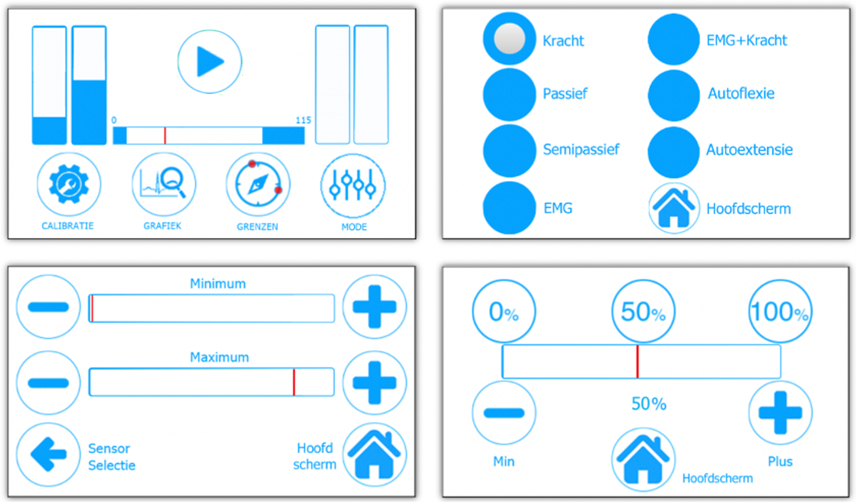
Onderzoekers
Partners











